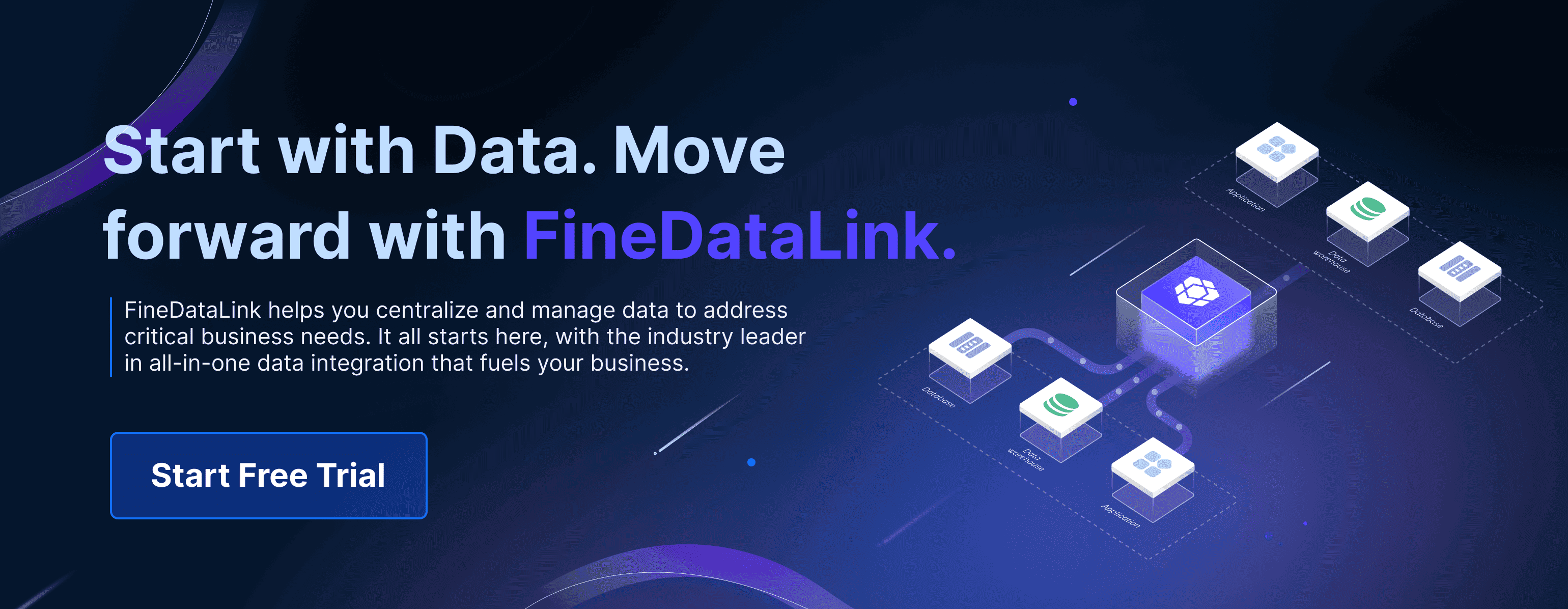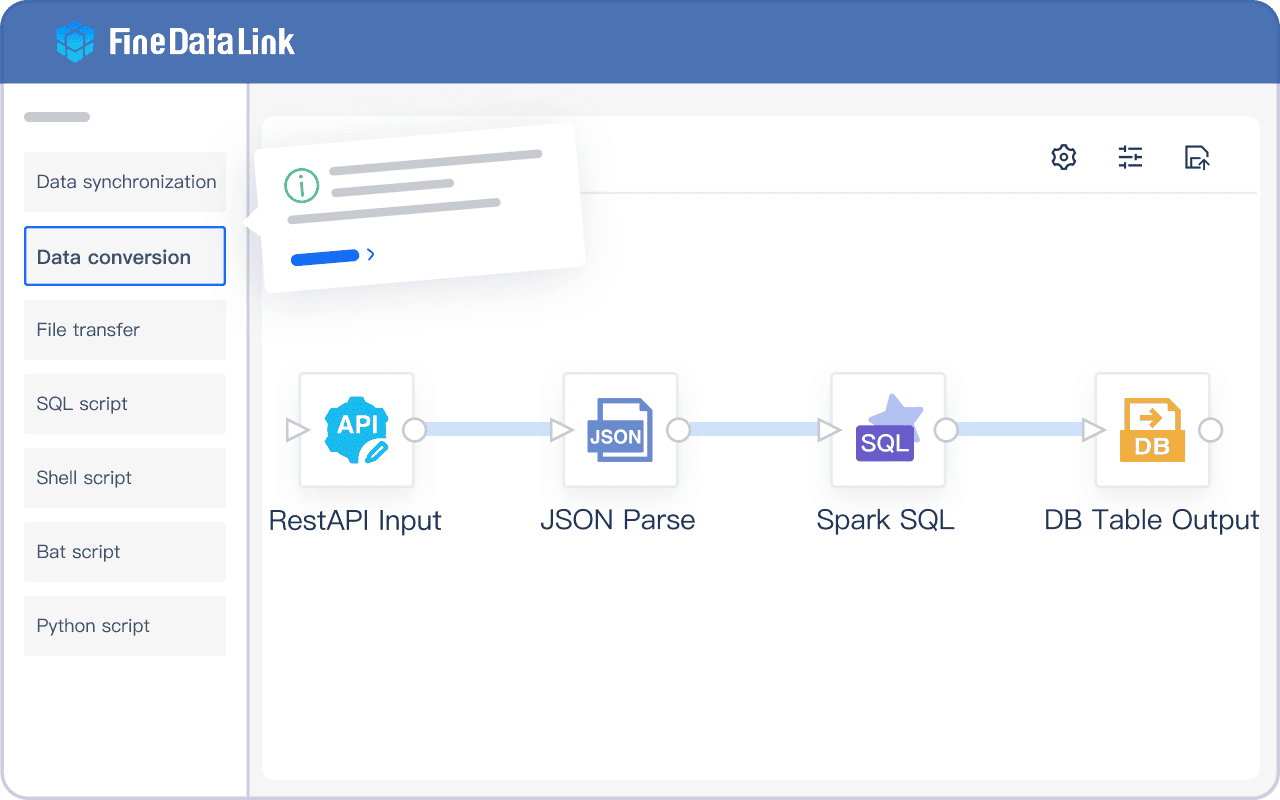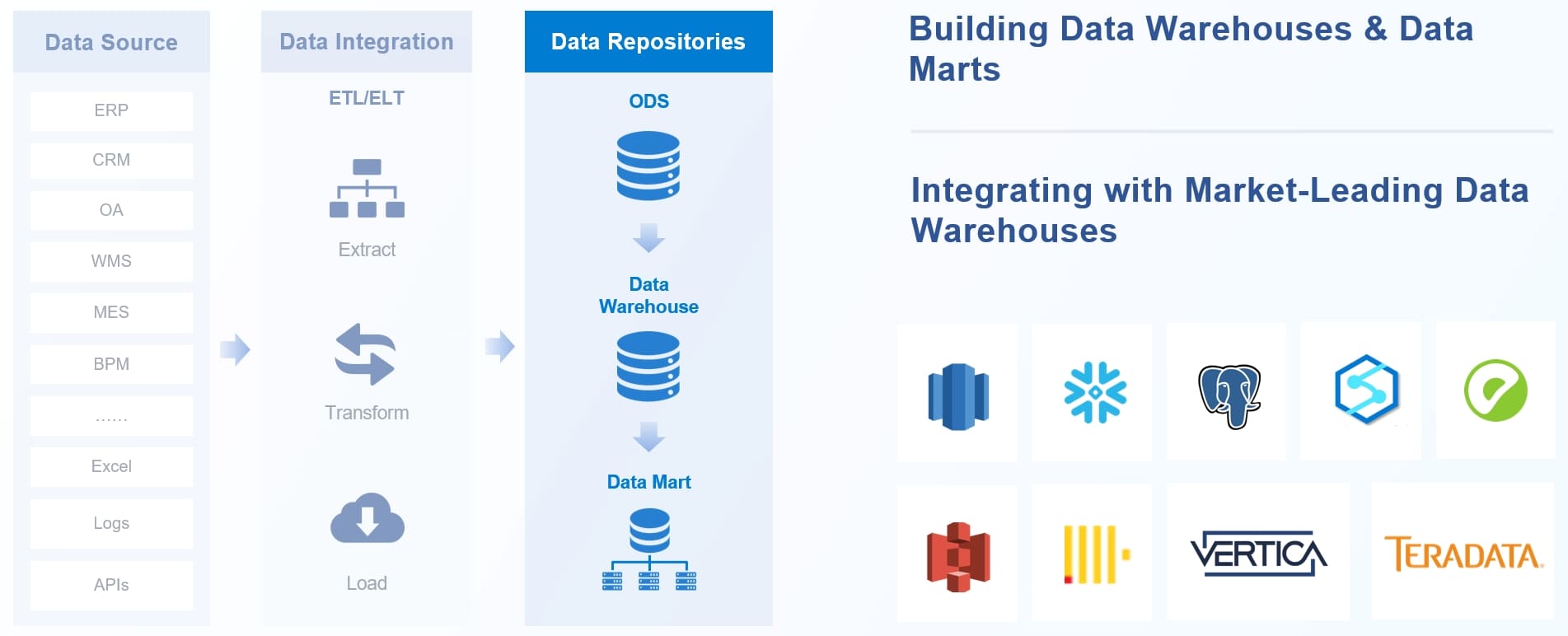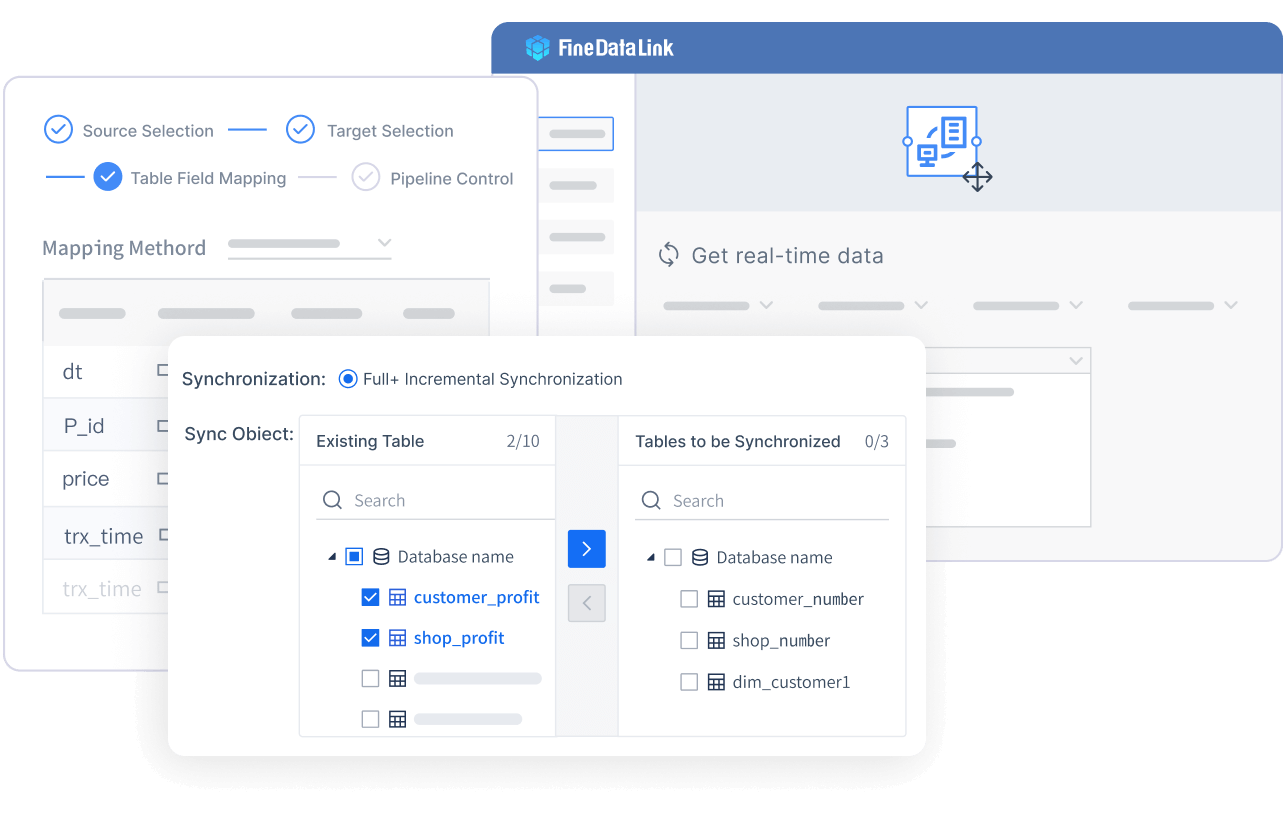

Data Quality Framework
Sean, Industry Editor
Oct 14, 2025
A data quality framework helps you check your data. It makes sure your data is correct, the same, and can be trusted. When you use data from many places, you can have problems. These problems include mistakes by people, double records, missing parts, or mixed-up data. Some data is even hidden. These problems can cost a lot of money every year. They also make it hard to believe your reports.
- 25% of data professionals say bad data stops people from learning about data. This can cause losses of over $5 million each year.
- 7% of organizations lose $25 million or more because of bad data.
If you use a good framework and tools like FineDataLink, you can trust your data. You can make better choices and keep your business working well.
Data Quality Framework Basics

What Is a Data Quality Framework
A data quality framework helps you manage your data better. It gives you steps to follow and rules to set. You use it to check your data and fix mistakes. This makes your data more accurate and useful for your business. When you use a framework, you can trust your reports. You can also make smarter choices.
Many groups use popular frameworks to help with data quality. Here are some of the most common frameworks:
| Framework | Description |
|---|---|
| TDQM (Total Data Quality Management) | This approach puts data quality into company processes. It gets everyone involved. |
| DAMA DMBOK (Data Management Body of Knowledge) | This framework gives rules and ideas for managing data. It helps with data quality projects. |
| ISO 8000 | This is a global standard for data quality. It covers things like accuracy and completeness. |
| Six Sigma | This method tries to lower mistakes in processes. It uses math tools to help improve data quality. |
| Data Governance Frameworks (e.g., COBIT, ITIL) | These frameworks make data quality a big part of data governance. They help manage data quality for the whole company. |
Each framework helps make your data better and more useful. They help you set rules and make sure everyone follows them. They also help you follow laws and rules about data.
When you start using a framework, you may face problems. Some problems are unclear rules, not enough training, and worries about privacy. You might also have trouble with fast growth or old and repeated data. Data silos and bad data entry can make things worse. A good framework gives you steps and tools to fix these problems.
Key Principles
Every data quality framework has important ideas behind it. These ideas help you make your data better. They show you what to focus on for your business.
Here are some main ideas found in most frameworks:
| Principle | Description |
|---|---|
| Data is an asset | This means data is valuable for your business. |
| Data quality is essential | This means you need good data to do well. |
You should always treat your data like something valuable. Good data helps your business reach its goals. You need to fix the biggest problems first. Use tools to check your data and make sure it follows the rules. Start with good data from the beginning to stop problems before they happen.
Most frameworks also include these important parts:
- Accountability: Give people clear jobs for managing data.
- Transparency: Make your data rules and steps easy to see and understand.
- Integrity: Check your data often to make sure it is right.
- Compliance: Follow all the laws and rules.
- Security: Keep your data safe from people who should not see it.
Tip: When you make your data quality framework, add these ideas. They help you build a strong plan for managing data quality and data governance.
By following these ideas, you can trust your data more. Everyone in your company can use data with confidence. This helps you make better choices and succeed in the long run.
Why Data Quality Framework Matters
Business Impact of Data Quality Framework
Using a data quality framework helps your business get stronger. You can trust your data and make better choices every day. A good framework gives you easy steps to follow. You can find mistakes early and fix them quickly. This saves you time and money.
Many companies get big benefits from using a data quality framework. You can see these benefits in different parts of your business:
| Aspect | Evidence |
|---|---|
| Operational Efficiency | Using a data quality framework makes work faster and helps you change with the market. |
| Market Agility | Good data helps you get correct results, so you do not waste time fixing mistakes. |
| Enhanced Decision-Making | Correct data lets you study trends and make smart choices. |
You can check how much you gain by looking at saved costs, more money earned, and happier customers. First, you find out how much bad data costs you. Next, you see how much you spend on the framework. Then, you pick important numbers to watch, check your progress, and make your plan better. This helps you show why your data quality work matters and get help for future projects.
Risks of Poor Data
If you do not care about data quality, your business can have many problems. Bad data can hurt every part of your company. You might lose money, waste time, or make customers unhappy. Here are some common problems:
- Bad sales targeting means you earn less money.
- Poor marketing plans waste your resources.
- Unhappy customers because of bad service.
- Higher costs and slow work.
Money risks can be very high. Mistakes in data can make you lose money, miss chances, or even get fined. For example, Verizon Wireless had to pay $25 million because of billing mistakes from bad data. Many banks and other companies lose millions each year because their data is not good.
You need strong data governance and a good data quality framework to stop these problems. Good data quality management keeps your business safe and helps you reach your goals.
Key Components of Data Quality Framework
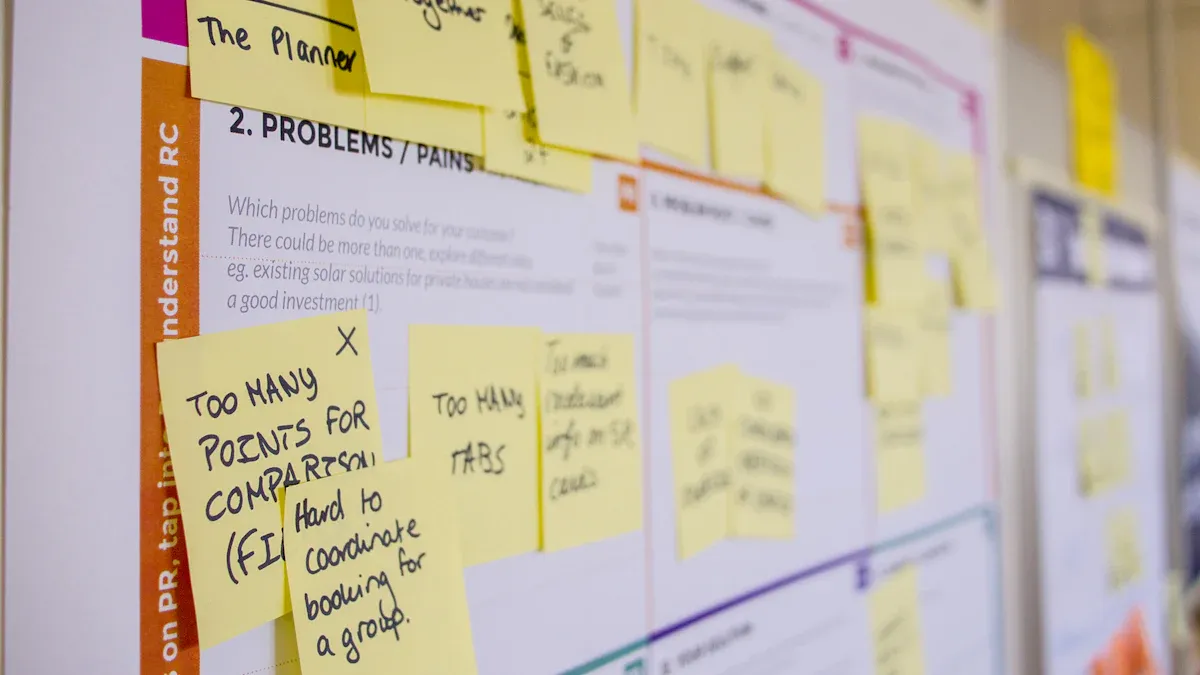
Governance
Strong governance helps you manage your data quality framework. It gives clear rules and jobs to everyone. This keeps your data safe and correct. You should have a steering committee to guide your plan. Data owners watch over certain data areas. Data stewards help manage how people use data in each part of your company. You also need to make policies for data management, security, and privacy. These steps help everyone know their job and follow the same rules.
- Authority and accountability for data quality
- Organization-wide data policies for management, security, and privacy
- Clear roles: data owners, data stewards, data custodians
- A governance board to set standards and check compliance
Tip: When you make your governance plan, add rules for data retention and master data management.
Profiling & Assessment
Profiling and assessment help you learn about your data. You look for mistakes, missing parts, and patterns. Tools can scan your data and find problems. This step shows where your data needs work. You can then set goals to make your data better. Checking your data often keeps it healthy and ready for business.
Rules & Standards
Rules and standards help keep your data quality high. You should check data at entry points to stop mistakes early. Clean your data often to remove duplicates. Use profiling tools to find issues. Make sure formats and definitions are the same with a data dictionary. Master data management gives you one true source for important data. Regular audits help you see your progress. Training your team on best ways helps everyone keep data quality strong.
- Check data at entry points
- Clean and remove duplicates
- Use profiling and monitoring tools
- Make formats and definitions the same
- Manage master data
- Audit data quality often
- Train employees on best ways
- Use AI and machine learning to find problems
Monitoring
You need to watch your data all the time. Set clear data quality standards that match your business goals. Use automated tools to watch your data and catch problems fast. Regular audits help you see if your data quality steps work well. Give stewardship jobs to keep someone in charge of quality. Watching your data all the time helps you fix problems before they get big.
- Set clear data quality standards
- Watch data quality all the time
- Use automated monitoring tools
- Audit data quality often
- Give stewardship jobs
Improvement
Improvement is an important part of any data quality framework. You should write down your steps and update them when needed. Use automated controls to find mistakes right away. Track things like accuracy and error rates. Check your data quality often and change your plan if you need to. Ask for feedback from everyone who uses data. Training and awareness help your team focus on quality. Always improving keeps your data strong and your business ready for change.
- Write down validation rules and monitoring steps
- Use automated controls for real-time checks
- Track metrics and KPIs
- Check and update your plan often
- Get feedback from users and stakeholders
Note: Using a strong data quality management solution can make these steps easier and faster.
Types of Data Quality Frameworks
Industry Standards
You can pick an industry standard for your data quality framework. These standards give you clear rules to follow. Many companies use them to keep their data correct and useful. ISO 8000 is a well-known standard. It focuses on data and information quality. It also covers governance and management. Other standards check for completeness, validity, relevancy, and timeliness. These help you see if your data has all the needed parts. They make sure your data is correct and up to date.
| Standard | Description |
|---|---|
| ISO 8000 | A global standard that focuses on data and information quality, including governance and management. |
| Completeness | Makes sure data has no missing values and includes all needed information. |
| Validity | Checks that the data collected is correct and reliable. |
| Relevancy | Means the data is useful and helps you make good choices. |
| Timeliness | Makes sure data is ready and updated when you need it, so it stays useful. |
Tip: Industry standards use written rules, automatic checks, and people’s responsibility. You can use these to keep your data correct, complete, and up to date.
Custom Approaches
Sometimes your business needs a custom approach. You make your own data quality framework with your own rules. You decide what is most important for your data. You set steps for checking, cleaning, and improving data. You use your own principles, standards, and tools. This helps your data stay correct and useful for your business.
- You make rules that fit your company’s needs.
- You use tools and steps that match your data sources.
- You teach your team to follow your own standards.
- You check and change your framework as your business grows.
Custom approaches help you focus on what matters most for your data. You can change your framework when your needs change.
Tool-Based Solutions
You can use tool-based solutions to help manage your data quality framework. These tools help you check, clean, and improve your data. Many companies use tools like Informatica, IBM InfoSphere QualityStage, Soda, Google Cloud Dataplex, Collibra, Ataccama ONE, Oracle EDQ, SAP Information Steward, and Precisely Trillium. Each tool has special features for different needs.
- Data profiling helps you find mistakes and patterns.
- Data cleansing removes copies and fixes errors.
- Data standardization makes your data look the same everywhere.
- Data enrichment adds new information for better understanding.
- Data validation checks if your data follows business rules.
- Data monitoring warns you about problems.
- Data reporting shows how your data quality changes over time.
Note: Tool-based solutions save you time and help you keep your data quality high. You can pick a tool that fits your business and data sources.
Implementation with FanRuan and FineDataLink
Assessment & Planning
You need a good plan before you start. First, look at your data closely. Check for mistakes, missing pieces, and copies. Use a data quality assessment framework to measure how correct, complete, and consistent your data is. Set goals that fit your business. Make sure your goals are clear and easy to check.
Here are the main steps for assessment and planning:
- Look at your data using quality metrics.
- Set clear goals for better data quality.
- Make rules for managing data quality.
- Pick tools that help you work faster.
- Watch your progress and change your plan if needed.
Turn your problems into SMART goals. Choose the best tools and give data stewards jobs to watch quality. Use a maturity roadmap to see how you are doing and celebrate small wins. FanRuan and FineDataLink help you set goals and build your process. You can connect data from many places and keep it the same. This makes your data more trustworthy and helpful for your business.
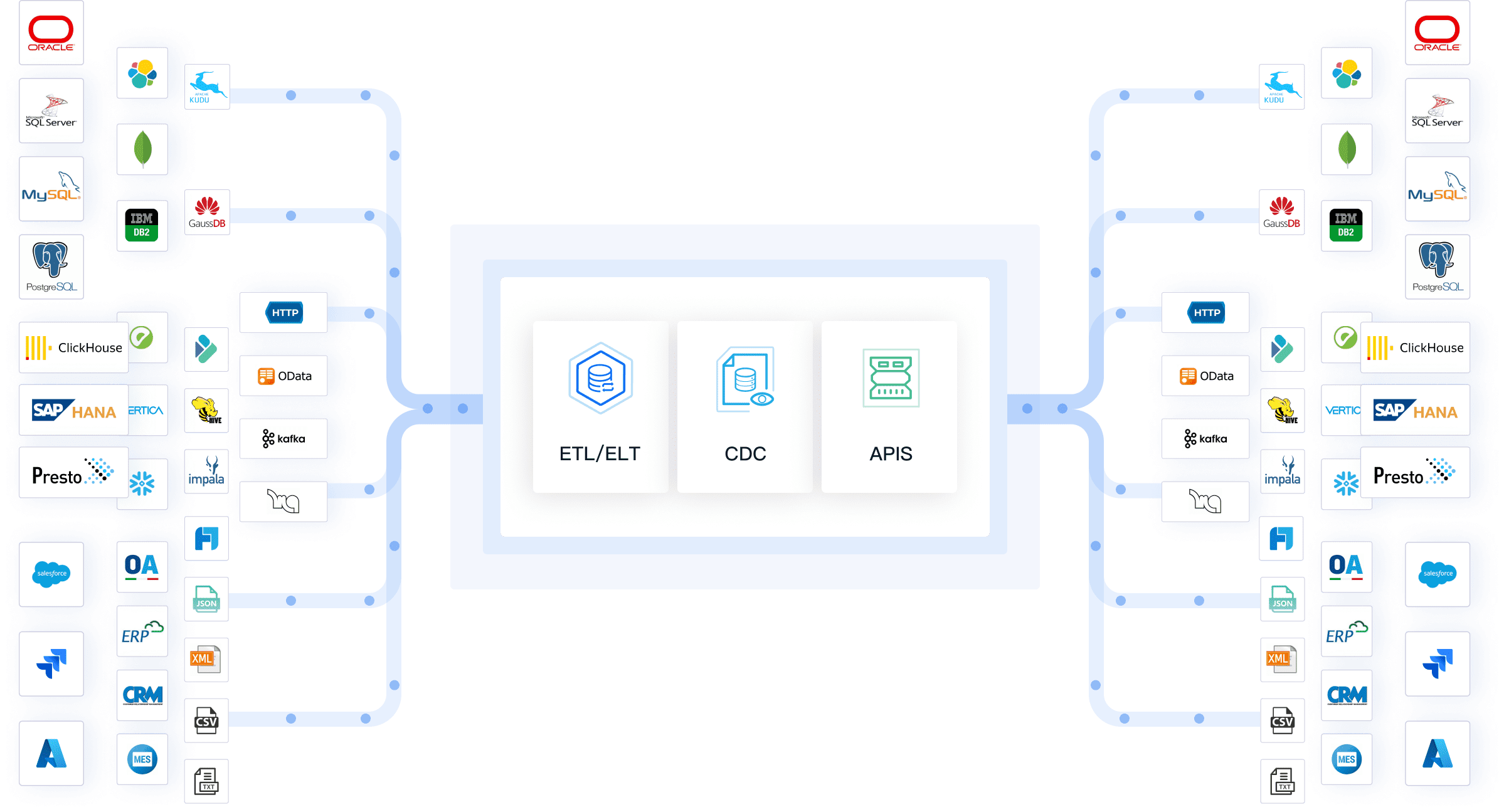
Tip: Start with a small project to test your plan. This helps you find problems early and change your plan if needed.
Setup & Integration
Setting up your data quality framework can be hard. It is even harder when you use data from different places. You might have problems like schema drift, mixed-up formats, and lots of data. FineDataLink helps with its easy-to-use platform and drag-and-drop tools. You do not need to be a tech expert to connect and manage your data.
| Challenge | Description | Solutions |
|---|---|---|
| Schema management | Schema drift makes it hard to keep things working. | Use automatic schema checks and alerts for changes. |
| Maintaining data quality and consistency | Mixed-up quality and formats can cause bad choices. | Set up rules, use profiling, and clean your data. |
| Handling large data volumes | Too much data can slow you down. | Use step-by-step processing and make logic faster. |
| Data security, governance, and compliance | Security and rules get tricky with lots of sources. | Use data labels and strong encryption. |
| Monitoring and troubleshooting pipelines | It is tough to track health and fix problems. | Use monitoring systems to watch quality over time. |
FineDataLink works with over 100 data sources. You can sync data in real time across platforms. The platform uses log monitoring to keep updates quick. You get automatic syncing for business and cross-domain data. This lowers wait times and keeps your reports fresh.
When you set up your framework, watch out for common mistakes:
| Pitfall | Explanation |
|---|---|
| Lack of proof-of-concept (POC) | A POC checks your plan and needs. Without it, you might confuse others about your progress. |
| Lack of transparency | Show your work often so everyone knows what is happening. |
| Omitting processes for handling bad data | Always add steps to clean and check data. If you skip this, people may not trust your data. |
| Omitting a formal testing phase | Test with real data to make sure your plan works. If you skip testing, you may have delays. |
| Skipping training | Teach your team about new tools. Do not expect them to learn everything alone. |
FanRuan and FineDataLink help you avoid these mistakes. You get easy-to-use screens, automatic data syncing, and strong support for data quality. You can connect, clean, and check your data with less work.
Note: Always test your setup with real data before you go live. This helps you catch mistakes and build trust in your data quality framework.
Monitoring & Optimization
After your data quality framework is running, you need to watch your data all the time. Set up automatic checks for validation and freshness. Track how people use your data products. This shows if people trust your data.
Important things to watch include:
| Metric Type | Description |
|---|---|
| Automated Metrics | Watch validation and freshness checks over time. |
| Data Product Engagement Metrics | See how people use your data products. |
| Comprehensive Frameworks | Check data quality scores in different areas. |
| Key Dimensions of Data Quality | Accuracy, completeness, consistency, integrity, validity, timeliness, uniqueness. |
| Specific Metrics | Error ratio, duplicate record rate, data lineage completeness. |
Focus on accuracy, completeness, and consistency. Check if your data matches real-world facts. Make sure all needed data is there. Keep formats and links the same everywhere. Make sure data values use the right formats. Check that your data is up to date and ready when needed. Make sure each thing only shows up once.
FineDataLink helps you do these checks automatically. You get real-time monitoring and alerts for problems. The platform keeps your data synced and the same. You can make your process better by looking at metrics and making changes. FanRuan helps with total data quality management using advanced ETL and ELT tools. You can keep improving your data quality and get your business ready for changes.
Tip: Check your metrics often. Use feedback from users to make your data quality framework better.
FineDataLink is special because it has an easy platform, real-time syncing, and works with many data sources. You can manage your data quality framework with less work and more trust. The platform helps you build a strong base for business intelligence and smart choices.
Using a data quality framework helps you trust your data. It lets you make smarter choices for your business. First, set clear rules for your data. Then, find where your data comes from and check for mistakes. Regular checks and strong rules keep your data safe. Watch things like accuracy and completeness to see how you are doing. FanRuan and FineDataLink have tools to help you manage data from many places. They help you make your data better. Start now to build a strong base for your business.
- Steps to improve data quality:
- Make clear rules for your data.
- Find and connect all your data sources.
- Check your data and fix mistakes.
- Look at your data often.
- Review how good your data is.
- Give people jobs to manage data.
- Use machines to help check data.
FanRuan
https://www.fanruan.com/en/blogFanRuan provides powerful BI solutions across industries with FineReport for flexible reporting, FineBI for self-service analysis, and FineDataLink for data integration. Our all-in-one platform empowers organizations to transform raw data into actionable insights that drive business growth.
FAQ
A data quality framework gives you steps to check and improve your data. You use it to find mistakes, fix problems, and make sure your data helps your business grow.
You need good data quality to make smart choices. Bad data can lead to wrong decisions, lost money, and unhappy customers. When you trust your data, you can plan better and reach your goals.
You start by looking at your data. Find errors and missing parts. Set clear rules for your team. Use tools to clean and monitor your data. Check your progress often.
Yes, FineDataLink lets you connect and manage data from over 100 sources. You can sync data in real time. The platform helps you keep your data accurate and up to date.
You should focus on accuracy, completeness, and consistency. Make sure your data matches real facts. Check that all needed data is there. Keep your data the same across systems.


